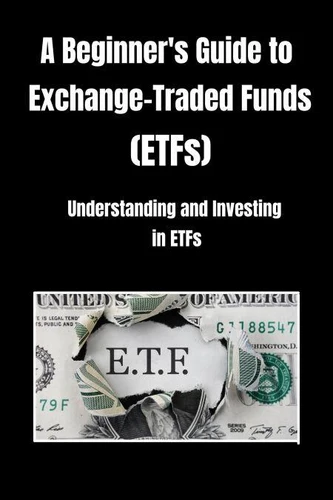A Beginner's Guide to Exchange - Traded Funds (ETFs). Financial Advice Detective, #1
Par :Formats :
Disponible dans votre compte client Decitre ou Furet du Nord dès validation de votre commande. Le format ePub est :
- Compatible avec une lecture sur My Vivlio (smartphone, tablette, ordinateur)
- Compatible avec une lecture sur liseuses Vivlio
- Pour les liseuses autres que Vivlio, vous devez utiliser le logiciel Adobe Digital Edition. Non compatible avec la lecture sur les liseuses Kindle, Remarkable et Sony
 , qui est-ce ?
, qui est-ce ?Notre partenaire de plateforme de lecture numérique où vous retrouverez l'ensemble de vos ebooks gratuitement
Pour en savoir plus sur nos ebooks, consultez notre aide en ligne ici
- FormatePub
- ISBN8215357378
- EAN9798215357378
- Date de parution01/01/2023
- Protection num.pas de protection
- Infos supplémentairesepub
- ÉditeurWMG Publishing
Résumé
A Beginner's Guide to Exchange-Traded Funds (ETFs)This ebook will tell you all you need to know about ETF. An Exchange-Traded Fund (ETF) is a type of investment vehicle that allows investors to trade stocks, bonds, and commodities in one transaction. Investors benefit from ETFs because they are low cost, diversify, are tax efficient, transparent, and liquid. Among the different types of ETFs available are index ETFs, sector ETFs, bond ETFs, commodity ETFs, and actively managed ETFs.
In terms of investment objectives and characteristics, each type of ETF is unique. Just as with individual stocks, investors can buy and sell ETFs through a brokerage account. A daily disclosure of an ETF's holdings is required by the Securities and Exchange Commission (SEC). In addition to market risks, liquidity risks, and concentration risks, ETFs also carry other risks. These risks should be carefully considered and assessed by investors before investing in ETFs.
In terms of investment objectives and characteristics, each type of ETF is unique. Just as with individual stocks, investors can buy and sell ETFs through a brokerage account. A daily disclosure of an ETF's holdings is required by the Securities and Exchange Commission (SEC). In addition to market risks, liquidity risks, and concentration risks, ETFs also carry other risks. These risks should be carefully considered and assessed by investors before investing in ETFs.
A Beginner's Guide to Exchange-Traded Funds (ETFs)This ebook will tell you all you need to know about ETF. An Exchange-Traded Fund (ETF) is a type of investment vehicle that allows investors to trade stocks, bonds, and commodities in one transaction. Investors benefit from ETFs because they are low cost, diversify, are tax efficient, transparent, and liquid. Among the different types of ETFs available are index ETFs, sector ETFs, bond ETFs, commodity ETFs, and actively managed ETFs.
In terms of investment objectives and characteristics, each type of ETF is unique. Just as with individual stocks, investors can buy and sell ETFs through a brokerage account. A daily disclosure of an ETF's holdings is required by the Securities and Exchange Commission (SEC). In addition to market risks, liquidity risks, and concentration risks, ETFs also carry other risks. These risks should be carefully considered and assessed by investors before investing in ETFs.
In terms of investment objectives and characteristics, each type of ETF is unique. Just as with individual stocks, investors can buy and sell ETFs through a brokerage account. A daily disclosure of an ETF's holdings is required by the Securities and Exchange Commission (SEC). In addition to market risks, liquidity risks, and concentration risks, ETFs also carry other risks. These risks should be carefully considered and assessed by investors before investing in ETFs.

















